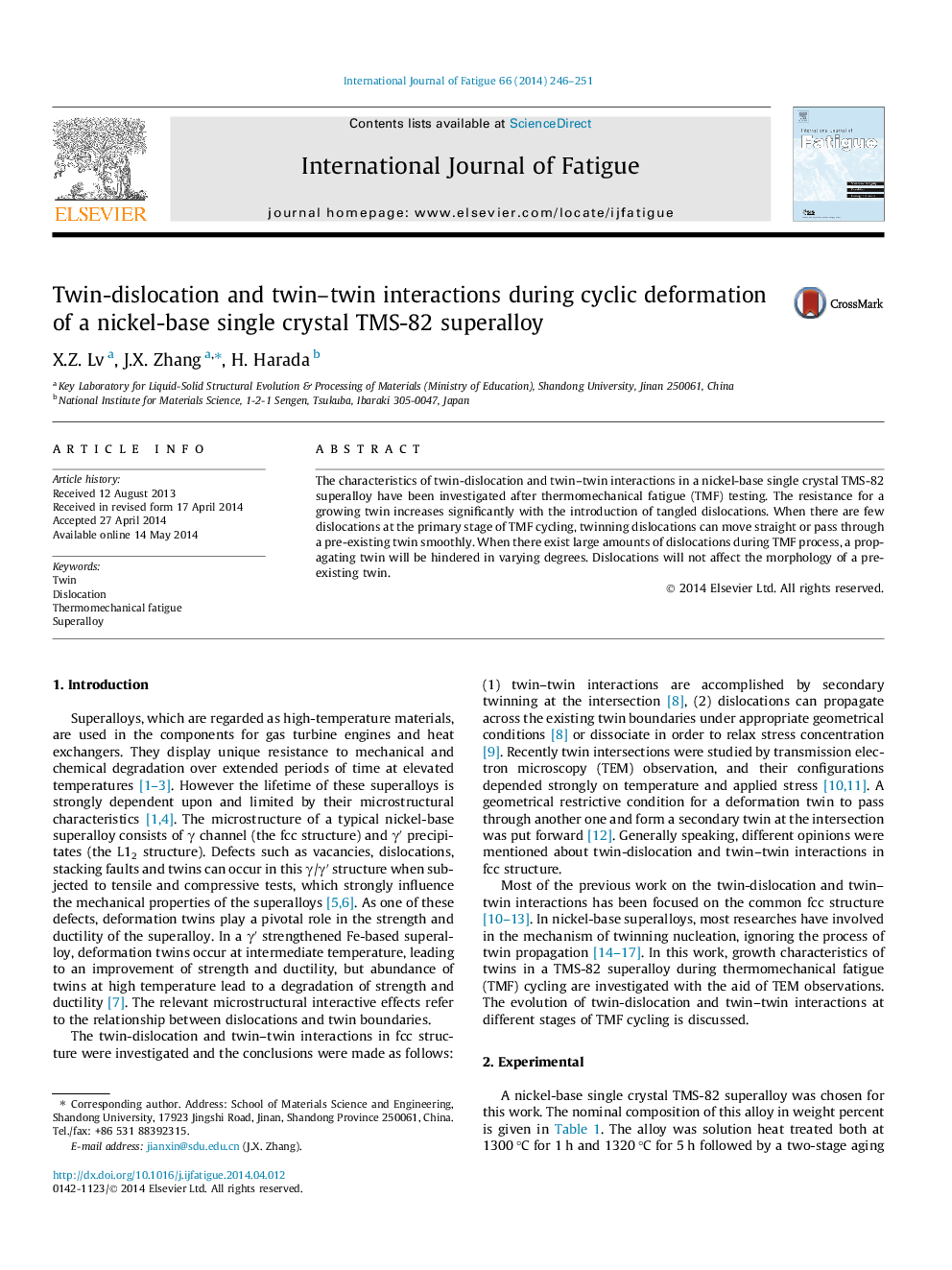| Article ID | Journal | Published Year | Pages | File Type |
|---|---|---|---|---|
| 778246 | International Journal of Fatigue | 2014 | 6 Pages |
•At the primary stage of thermomechanical fatigue cycling, deformation twins can grow smoothly.•When large amounts of dislocations are introduced, deformation twin can be hindered in varying degrees.•Tangled dislocations which emerge after a deformation twin has formed will not affect the morphology of a pre-existing twin.•If there are few dislocations around a pre-existing twin, a growing twin can pass through it smoothly.•If lots of dislocations pile up around the pre-existing twin, the growing twin will be stopped at the intersection site.
The characteristics of twin-dislocation and twin–twin interactions in a nickel-base single crystal TMS-82 superalloy have been investigated after thermomechanical fatigue (TMF) testing. The resistance for a growing twin increases significantly with the introduction of tangled dislocations. When there are few dislocations at the primary stage of TMF cycling, twinning dislocations can move straight or pass through a pre-existing twin smoothly. When there exist large amounts of dislocations during TMF process, a propagating twin will be hindered in varying degrees. Dislocations will not affect the morphology of a pre-existing twin.
